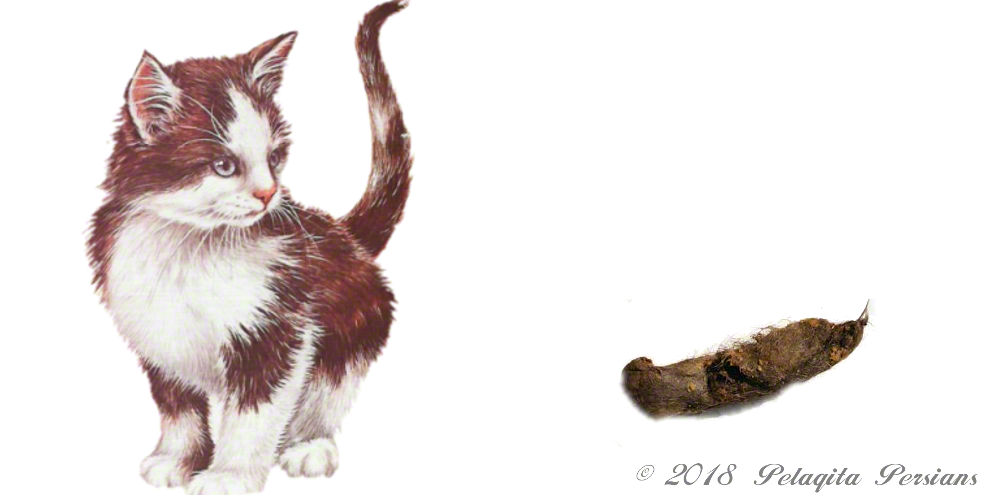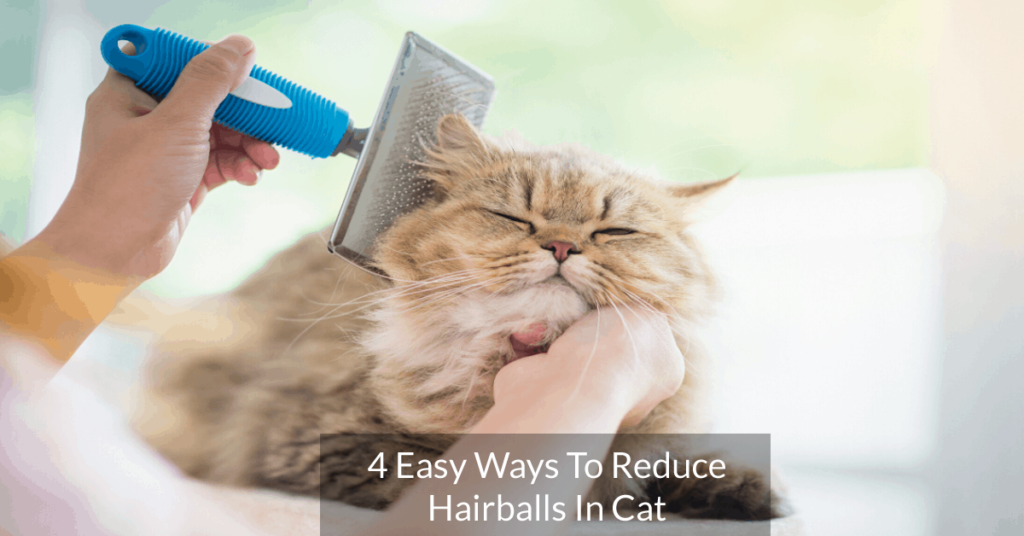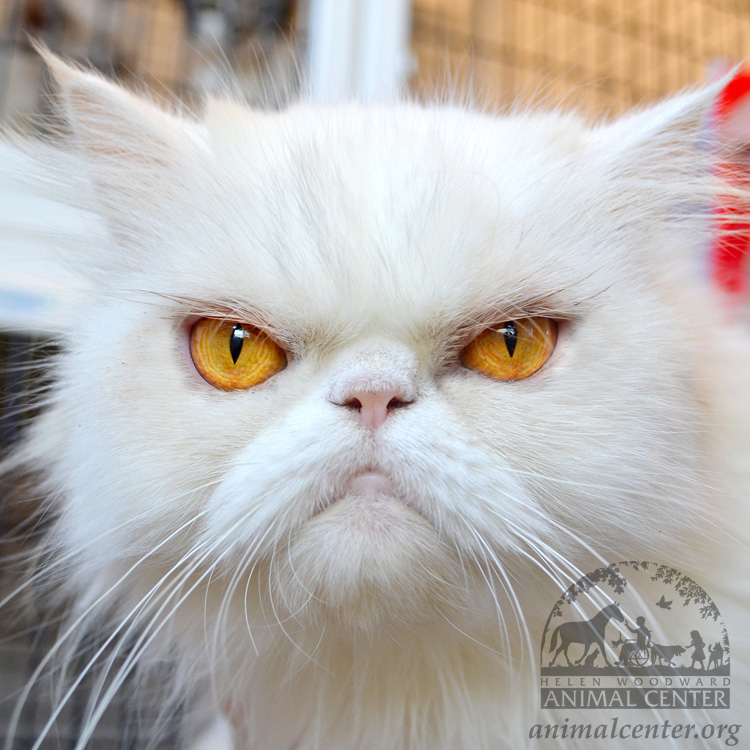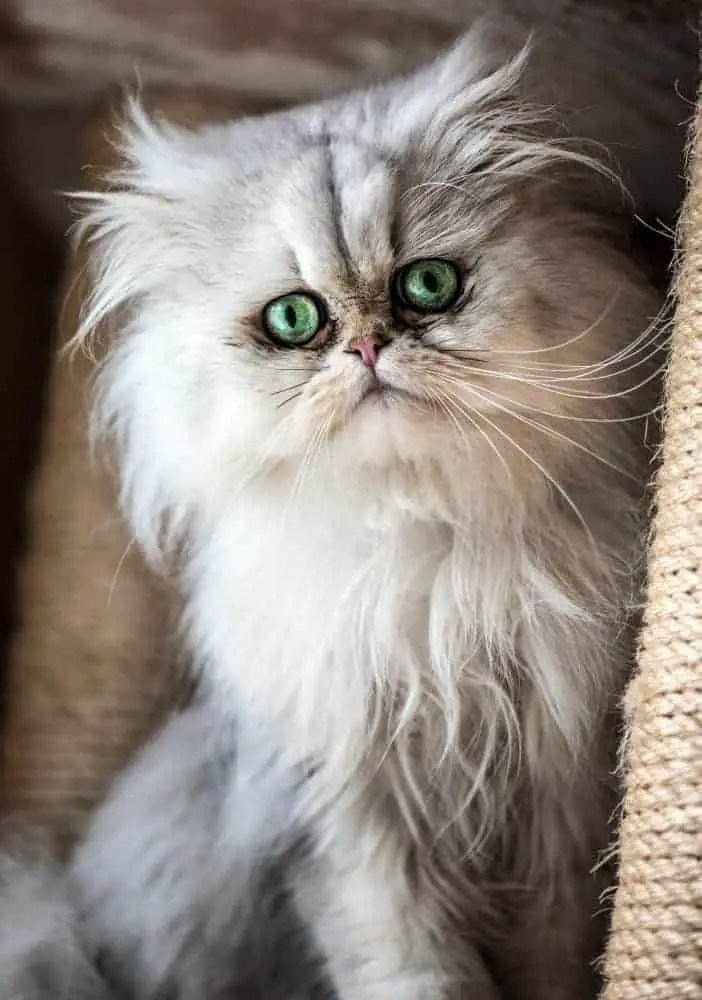In this article, you will learn how to prevent hairballs in Persian cats. I will provide you with some tips and strategies to keep your furry friend from experiencing discomfort and digestive issues. By following these preventative measures, you can ensure your Persian cat remains healthy and happy. Stay tuned to discover the best practices for hairball prevention in Persian cats.
How to Prevent Hairballs in Persian Cats
If you own a Persian cat, you are probably familiar with the struggle of dealing with hairballs. These adorable felines with their long, luxurious coats are prone to hairballs due to their grooming habits and the nature of their fur. Hairballs can be uncomfortable for your cat and potentially lead to serious health issues. However, there are several preventive measures you can take to minimize the occurrence of hairballs and keep your Persian cat healthy. In this article, we will explore the causes of hairballs in Persian cats, the symptoms to look out for, the health risks associated with hairballs, prevention tips, grooming techniques, and more.
Causes of Hairballs in Persian Cats
Grooming habits of Persian cats
One of the main causes of hairballs in Persian cats is their grooming habits. Persian cats are known for their meticulous self-grooming routine, which involves licking their fur to keep it clean and well-maintained. However, this grooming process leads to the ingestion of loose hairs, which can accumulate in the digestive tract and form hairballs.
Ingestion of fur during grooming
As Persian cats groom themselves, they inevitably swallow some of their loose fur. The fur passes through the esophagus and into the stomach. While most of the hair passes through the digestive system without any issues, some hair may accumulate over time, forming hairballs.
Long hair leading to more hairballs
The length and density of a Persian cat’s coat also contribute to the frequency of hairballs. Persian cats have long, thick fur that is more prone to shedding. The more hair a cat sheds, the higher the chances of hairballs developing in the digestive tract.
Symptoms of Hairballs in Persian Cats
It’s crucial to recognize the symptoms of hairballs in Persian cats, as they can indicate that your cat is experiencing discomfort or potential health risks associated with hairballs.
Coughing and gagging
Coughing and gagging are common signs that your Persian cat may be attempting to expel a hairball. You may notice your cat retching and making hacking sounds as they try to bring up the hairball.
Vomiting
Frequent vomiting, especially after meals, can indicate the presence of hairballs. If you notice your Persian cat frequently bringing up hairballs, it’s essential to address the issue to prevent further health complications.
Lack of appetite
Hairballs can make your cat feel full or uncomfortable, leading to a decreased appetite. If your Persian cat suddenly shows disinterest in food or experiences weight loss, it could be a sign that hairballs are causing digestive issues.

Health Risks Associated with Hairballs
While hairballs may seem like a common and harmless occurrence in cats, they can pose several health risks if left unmanaged.
Obstruction of the digestive tract
When hairballs accumulate in the digestive tract, they can form a mass that obstructs the passage of food. This obstruction can prevent the normal digestion and absorption of nutrients, leading to digestive issues and malnutrition.
Intestinal blockages
In severe cases, hairballs can become lodged in the intestine, causing a complete blockage. Intestinal blockages are life-threatening emergencies that require immediate veterinary attention and potential surgical intervention.
Respiratory issues
If hairballs are not expelled through vomiting or defecation, they can sometimes migrate into the respiratory system. This can lead to respiratory issues such as coughing, wheezing, and difficulty breathing.
Prevention Tips for Hairballs in Persian Cats
Fortunately, there are several preventive measures you can take to minimize the occurrence of hairballs in your Persian cat.
Regular grooming routine
Maintaining a regular grooming routine is essential for managing hairballs. Regular brushing helps to remove loose hair from your cat’s coat before it becomes ingested during grooming. Aim for daily brushing sessions to keep your Persian cat’s fur tangle-free and reduce the amount of hair ingested.
Using specialized cat brushes
Investing in a high-quality cat brush specifically designed for long-haired breeds like Persian cats can make a significant difference in preventing hairballs. These brushes are designed to reach through the topcoat and remove loose hairs without causing discomfort to your cat.
Dietary changes and hairball control foods
Some cat foods are specially formulated to help control and prevent hairball formation. These foods often contain additional fiber to help move hair through the digestive system more efficiently. Consult with your veterinarian to find a suitable hairball control diet for your Persian cat.

Professional Grooming for Persian Cats
While regular at-home grooming is essential, there are also benefits to seeking professional grooming services for your Persian cat.
Benefits of professional grooming
Professional groomers have the expertise and tools necessary to handle and groom long-haired cats like Persians effectively. They can trim excess fur, remove mats, and keep your cat’s coat in optimal condition.
Frequency of professional grooming sessions
The frequency of professional grooming sessions for Persian cats can vary depending on the individual cat’s coat and grooming needs. Generally, scheduling a professional grooming session every 4 to 6 weeks is recommended to ensure your cat’s coat is properly maintained.
Finding a reputable groomer
When choosing a professional groomer for your Persian cat, it’s important to do thorough research and find a reputable groomer with experience in handling long-haired breeds. Seek recommendations from other pet owners or consult your veterinarian for referrals.
At-Home Grooming Techniques for Persian Cats
In addition to professional grooming, there are essential at-home grooming techniques that every Persian cat owner should know.
Brushing Persian cats’ coat
Regular brushing is the cornerstone of at-home grooming for Persian cats. Use a wide-toothed comb or a specialized cat brush to gently remove loose hair and prevent tangles and mats from forming.
Bathing Persian cats
Bathing Persian cats can help keep their coat clean and minimize the ingestion of loose hair during grooming. Use a cat-specific shampoo and ensure the water temperature is comfortable for your cat. However, it’s important to note that Persian cats may need special care and attention during bath time due to the length of their fur.
Trimming Persian cats’ hair
Trimming your Persian cat’s hair, particularly around the hindquarters, can help minimize the amount of fur they ingest during grooming. Be cautious when trimming your cat’s fur and consider seeking professional help if you are not confident in your grooming skills.

Anti-Hairball Products for Persian Cats
There are various anti-hairball products available to aid in the prevention and management of hairballs in Persian cats.
Hairball remedies and lubricants
Hairball remedies and lubricants are designed to help facilitate the passage of hair through the digestive system. These products often come in the form of gels or treats that help lubricate the digestive tract and ease the hairball’s movement.
Hairball prevention treats
Hairball prevention treats can be a useful tool in reducing the occurrence of hairballs. These treats are typically formulated with ingredients that promote healthy digestion and minimize the formation of hairballs.
Supplements for hairball control
Supplements such as omega-3 fatty acids or fiber supplements can be beneficial for hairball control. These supplements help improve the overall health of your cat’s coat and aid in the natural elimination of hair.
Importance of a Balanced Diet for Persian Cats
Maintaining a balanced and nutritious diet is crucial for the overall well-being of Persian cats and can also play a role in preventing hairballs.
High-quality cat food choices
Choose high-quality cat food specifically formulated for the nutritional needs of felines, including the specific needs of Persian cats. Look for cat foods that are rich in protein and contain essential nutrients for healthy skin and coat.
Protein and fiber content
Protein is essential for maintaining healthy skin and a glossy coat, while fiber aids in digestion and the elimination of hair through the intestines. Ensure that your Persian cat’s diet includes an appropriate balance of protein and fiber.
Avoiding excessive treats and human food
While it may be tempting to indulge your Persian cat with treats or scraps of human food, it’s important to practice moderation. Excessive treats and human food can lead to imbalances in your cat’s diet and potentially contribute to hairball formation.

Hydration and Water Intake for Persian Cats
Proper hydration is crucial for maintaining a healthy digestive system and facilitating the movement of hair through the intestines. Here are some tips to encourage water intake in Persian cats:
Providing fresh water at all times
Ensure that your Persian cat has access to fresh, clean water at all times. Monitor water levels regularly and refill as needed to encourage regular hydration.
Different methods to encourage water intake
Some cats may prefer running water over still water. Consider investing in a cat fountain, which provides a continuous stream of fresh water and can be enticing for Persian cats.
The use of cat fountains
Cat fountains not only provide a source of running water but also help to keep water cool and oxygenated. This can encourage your Persian cat to drink more, promoting overall hydration and aiding in hairball prevention.
Environmental Enrichment to Reduce Hairballs
Creating an enriched environment for your Persian cat can help reduce stress and minimize excessive grooming, which can contribute to hairball formation.
Stress reduction and playtime
Stress can lead to increased grooming in cats. Provide ample environmental enrichment, such as interactive toys, scratching posts, and comfortable resting areas, to keep your Persian cat mentally stimulated and reduce stress.
Providing appropriate scratching posts
Scratching is a natural behavior for cats and helps remove loose hair from their claws and prevent matting. Ensure you have designated scratching posts or boards available for your cat to use and discourage them from scratching furniture or other inappropriate surfaces.
Creating comfortable grooming areas
Designate a comfortable and peaceful area in your home for your Persian cat’s grooming sessions. Make it a pleasant experience by providing soft bedding, natural light, and gentle background music to help relax your cat during grooming.

Regular Veterinary Check-ups for Persian Cats
Regular veterinary check-ups are essential for maintaining your Persian cat’s overall health and addressing any potential underlying health issues that may contribute to hairball formation.
Identifying underlying health issues
Your veterinarian can conduct a thorough examination and help identify any underlying health issues that may be contributing to hairball problems. Conditions such as skin allergies, gastrointestinal disorders, or dental problems can all impact your cat’s grooming behavior and hairball risks.
Monitoring hairball prevention progress
During routine check-ups, your veterinarian can assess the effectiveness of your hairball prevention measures and make recommendations for any necessary adjustments. They can also inspect your cat’s coat, skin, and overall health to ensure there are no underlying concerns.
Discussing dietary changes with the vet
If you are considering making dietary changes to aid in hairball prevention, consult with your veterinarian first. They can provide guidance on appropriate diet choices and discuss any potential concerns or considerations specific to your Persian cat’s health.
Dealing with Hairballs in Persian Cats
While preventive measures are essential, occasional hairballs may still occur. It’s important to know how to handle hairballs and when to seek veterinary assistance.
Intervention methods for hairball removal
If you notice your Persian cat struggling with a hairball, you can try gentle intervention methods to help facilitate its removal. Consult with your veterinarian for specific recommendations on products or techniques to safely assist in the hairball’s passage.
Home remedies for mild cases
In mild cases, home remedies such as the use of mild laxatives or petroleum jelly can sometimes help ease the passage of hairballs. However, it’s crucial to consult with your veterinarian before administering any home remedies, as improper use or dosage can be harmful.
When to seek veterinary assistance
If your Persian cat is experiencing persistent or severe hairball issues, it’s important to seek veterinary assistance. Your veterinarian can assess the situation, provide appropriate treatment options, and determine if the hairball is causing any complications or obstructions requiring medical intervention.
Possible Complications and Treatments
In some cases, hairballs in Persian cats can lead to complications that require immediate veterinary attention and treatment.
Surgical interventions for severe cases
For severe cases of hairball complications, surgical intervention may be necessary. If a hairball is causing an intestinal blockage or other life-threatening issues, your veterinarian may recommend surgery to remove the hairball and address any related complications.
Medications to alleviate hairball-related symptoms
Your veterinarian may prescribe medications or treatments to alleviate symptoms associated with hairballs, such as vomiting, coughing, or respiratory issues. These medications can help provide relief and assist in the natural passage of the hairball.
Post-treatment care and precautions
After any necessary treatments or surgical interventions, your Persian cat will require post-treatment care and precautions. Follow your veterinarian’s instructions carefully, administer medications as prescribed, and provide a calm and stress-free environment for your cat’s recovery.
Conclusion
Hairballs are a common issue in Persian cats, but with proper preventive measures and regular grooming, you can significantly reduce the occurrence of hairballs and keep your furry friend healthy and comfortable. Establish a regular grooming routine, seek professional grooming services when necessary, provide an enriched environment, and consult with your veterinarian for guidance and support. By taking proactive steps, you can minimize the risks associated with hairballs and ensure a happy and hairball-free life for your beloved Persian cat.
Common Questions about Persian Cats
-
How often should I groom my Persian cat to prevent hairballs?
- To prevent hairballs, it is recommended to groom your Persian cat daily. Regular brushing helps remove loose hair and reduce the chances of hairballs developing.
-
Are there any specific grooming tools I should use for my Persian cat?
- Yes, using specialized brushes designed for long-haired cats like Persians can be beneficial. Look for wide-toothed combs or brushes with soft bristles that can penetrate the dense fur without causing discomfort.
-
Can a Persian cat’s diet help prevent hairballs?
- Yes, feeding your Persian cat a high-quality cat food with added fiber can aid in preventing hairballs. Consult with your veterinarian for specific dietary recommendations.
-
Should I be concerned if my Persian cat frequently coughs or gags?
- Frequent coughing or gagging can be a sign that your Persian cat is attempting to expel a hairball. Monitor the situation and consult with your veterinarian if the symptoms persist or worsen.
-
How can I encourage my Persian cat to drink more water?
- Providing fresh and clean water at all times is essential. Consider using a cat fountain to entice your Persian cat to drink more, as some cats prefer running water over still water.
-
What should I do if my Persian cat is unable to pass a hairball?
- If your Persian cat is unable to pass a hairball or shows signs of distress, it is important to seek veterinary assistance. Your veterinarian can assess the situation and provide appropriate treatment options.
-
Can frequent grooming sessions reduce hairball risks?
- Absolutely! Regular grooming sessions help remove loose hair from your Persian cat’s coat before it can be ingested during grooming. This can significantly reduce the chances of hairball formation.
-
Are there any cat foods specifically formulated for hairball control?
- Yes, there are cat foods available that are specially formulated to help control and prevent hairball formation. These foods often contain added fiber to aid in digestion and hair passage.
-
Is it normal for Persian cats to have hairballs occasionally?
- Occasional hairballs can be considered normal in Persian cats. However, frequent or severe hairballs may indicate an underlying issue and should be addressed by a veterinarian.
-
Can stress contribute to hairball formation in Persian cats?
- Yes, stress can lead to excessive grooming in cats, which increases the chances of hairball formation. Providing a stress-free environment and ample environmental enrichment can help reduce grooming and hairball risks.
